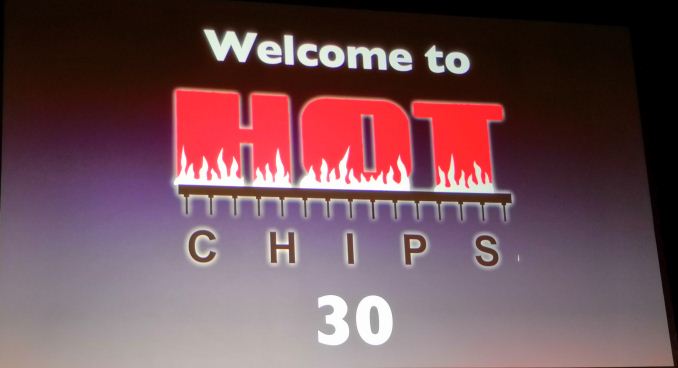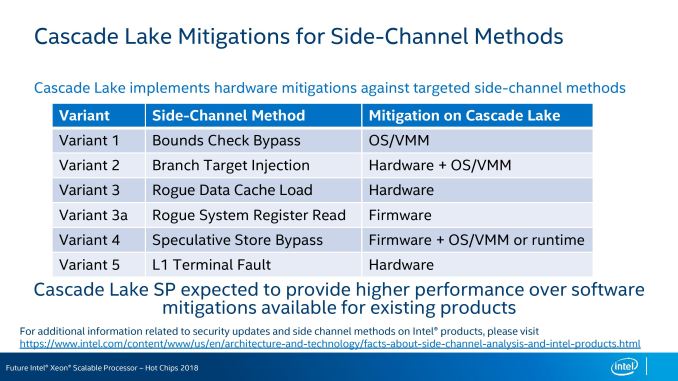AnandTech at Hot Chips 30: Our 2018 Show Coverage
by Ian Cutress on August 21, 2018 11:00 AM EST- Posted in
- CPUs
- Hot Chips
- GPUs
- Trade Shows
- SoCs
- Machine Learning

The last couple of days have been a whirlwind of coverage at two key events: Hot Chips, the semiconductor industry conference regarding new product designs, and some minor thing at Gamescom. At Hot Chips, we have planned to run over a dozen different Live Blogs, and have written up several of the talks into more detailed analysis pieces.
Hot Chips is one of the most enjoyable trade shows I go to every year: in the absence of IDF, Hot Chips is a show where we can learn significant information about both cores in the market, either server or desktop or mobile, or cores that are upcoming in future products. It also gives a chance for some companies to go into more details, or explain how their current products will lead into the future. The other yearly trade show that gives me goosebumps is SuperComputing.
Because we’ve got plenty of content about the show, I just wanted to run a small piece where our readers can access without searching for it. Here is our day one roundup. Day two roundup to follow when day two finishes.
Our full write-ups are as follows. This list will be added to as we get time.
Samsung’s Custom Exynos M3 Core Deep Dive
Over the coming months much of the hype for the new Exynos 9810 with its M3 cores fizzled out due to less and less enticing results. Starting from some questionable early-on benchmarks at the release of the Galaxy S9, through to our extremely in-depth Galaxy S9 device and SoC review, later on moving to DIY improvements in attempting to resolve some of the lower-hanging fruit in terms of software issues which hampered the real-world performance of the Exynos Galaxy S9. Throughout these pieces of course we had little official word from Samsung – and up till today we still didn’t know much about how the M3's microarchitecture actually worked.
Hot Chips 2018: Samsung’s Exynos-M3 CPU Architecture Deep Dive
We’ve exclusively first reported on the details of the new microarchitecture back in January and it was clear from that point on that this was a big one: Samsung made a big push in terms of performance, resulting in one of the biggest generational jumps of any silicon CPU designer in recent history. As part of this year’s first conference talks at HotChips 2018, we’ve had the pleasure to finally hear Samsung’s official microarchitecture disclosure on this year’s most polarising new CPU design, the Exynos M3.
Intel and Cascade Lake: Side-Channel Attack Protection
We recently learned about Intel’s Xeon Roadmap at the recent Datacenter Insider Summit, consisting of Cascade Lake in 2018, Cooper Lake in 2019, and Ice Lake in 2020, and now Hot Chips is the first chance for Intel to add some more information to the mix. Previously this would have been done at events like IDF, over several hours, but Intel only has 30 minutes on stage here.
Intel at Hot Chips 2018: Showing the Ankle of Cascade Lake
Intel is using the opportunity to expand on Cascade Lake’s previously announced features: new instructions for machine learning by taking advantage of the AVX-512 unit, and how the platform is set to be protected / hardened against attacks such as Spectre and Meltdown. We also have confirmation about how the new Optane DIMMs, Apache Pass, will be enabled through the platform.
Live Blogs at Hot Chips
For the direct live blogs, here are the talks we covered in real time as they were presented.
Day 1
- The Google Pixel Visual Core
- Intel on Graphics
- AMD APU Optimization
- SMIV DNN SoC for IoT
- NVIDIA Xavier SoC
- Microsoft Azure Sphere
- Google Titan
Day 2
Will be updated as we go through Day 2.












4 Comments
View All Comments